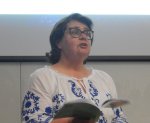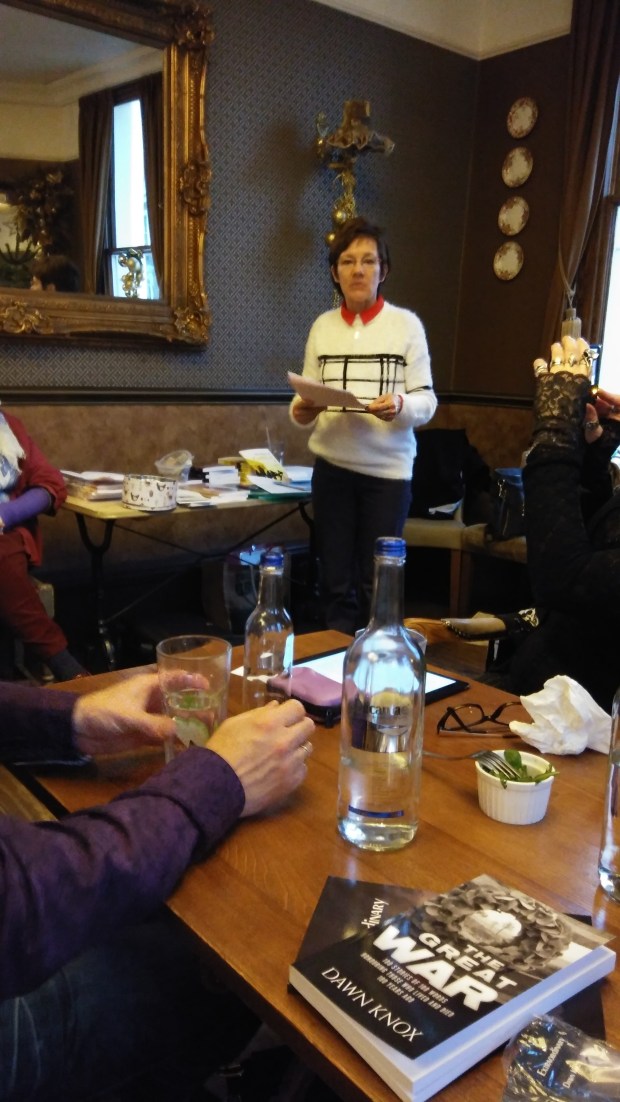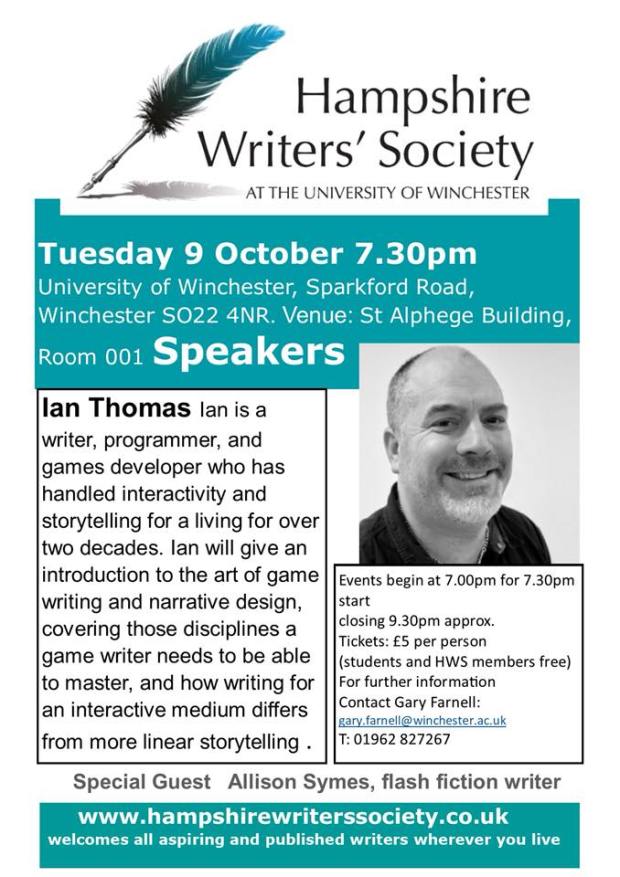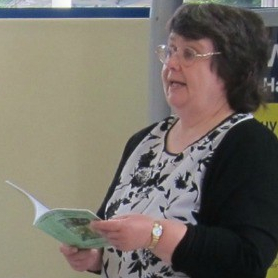Facebook – General
Pleased to say a new flash fiction story of mine is now up on Cafelit. Story below but am sharing the link to Cafelit too. Do explore the wide range of stories on there. Hope you enjoy Jack of All Trades.
This is influenced by an old Bob Newhart sketch (where a new employee has to report to his boss that King Kong is climbing up the side of the Empire State Building! Newhart is fab – I have a CD of his very best material including The Driving Instructor and highly recommend him).
Jack of All Trades by Allison Symes
chocolate milkshake
Nothing was said about this in the manual. Jack blinked. He hadn’t been mistaken. The purple dinosaur was there and it didn’t look happy. Still, Jack knew he had to report these things so he tapped his supervisor’s number out on his mobile.
It took several minutes for Jack to stop repeating his description of the beast and longer still for the supervisor to stop swearing. The purple dinosaur was munching its way through what had been the supermarket.
At least demolishing the contents of the butcher’s counter was keeping the creature occupied and its attention away from Jack. He felt this was good news. Jack’s supervisor felt differently – his cousin was the butcher at that supermarket. It was made clear Jack was disposable.
Jack hung up. If he didn’t resolve this, he’d be eaten or, if he survived, sacked. If he did resolve it, the supervisor wouldn’t mind having the call cut off.
He saw the dinosaur had finished the meat. The next aisle contained the veg.
It won’t want that, Jack thought. I never do. Still, if a creature comes through from the next world, it can jolly well go back there again and at speed. We don’t want his sort here.
‘Come here, boy,’ Jack did a quick check, ‘sorry, girl. This world is no place for you.’
Jack took a flare out from his tool belt and fired it above the dinosaur. It roared and ran back through the gaping hole in dimensions its body had blocked from Jack’s view.
Jack sighed. He’d have to fix that too.
About the author
Allison Symes is published by Chapeltown Books, Cafe Lit, and Bridge House Publishing amongst others. She is a member of the Society of Authors and Association of Christian Writers. Her website is www.allisonsymescollectedworks.wordpress.com and she blogs for Chandler’s Ford Today – http://chandlersfordtoday.co.uk/author/allison-symes/
Am enjoying Doctor Who though admittedly tonight’s episode was not for the arachnophobes amongst us. Scary though, as DW is meant to be. I always did sympathise with Ron Weasley in Harry Potter and the Chamber of Secrets over his reaction to the giant spiders in that.
Character fears can be a good area to explore to:-
a. Find out whether or not they overcome them
b. How the fears developed
c. What happens when forced to face up to them.
Fears can be the making of a character if, to use the modern phrase, “they feel the fear and do it anyway”. There have got to be some great stories there!
Facebook – General – and More than Writers, ACW blog
Time for my monthly spot on More Than Writers, the Association of Christian Writers’ blog. This time, I look at KISS and why Keeping It Simple really isn’t a stupid thing to do.
The irony is that effortless reading (which is a joy) has almost certainly been subject to many an edit to get it to that point. Writing directly can be harder than you think. Fighting the urge to embellish what doesn’t need it is an ongoing thing.
Anyway, hope you enjoy.
Keeping It Simple Is Definitely Not Stupid
 |
| In my honest opinion, keeping your writing simple is never a stupid thing to do. Pixabay image. |
You then repeat the process until you reach the point where you cannot improve the work. Sometimes you reach the point of being heartily sick of it but that’s another story. It shows it’s time to take a break and come back to it later and look at it again with a fresh perspective. The distance away from it does help.
 |
| Some editing is definitely needed here! Pixabay image! |
I learned a long time ago when someone makes something look easy, whether it is writing or any other creative art, you can bet that same someone has worked their socks off for years, perfecting their craft, to achieve this. (And, as they say, other hosiery items are available!).
 |
| Just how much hard work has gone into getting to this stage? Pixabay image |
I start my editing of a story or a blog post by looking for what I know are my wasted words – “very”, “actually” and “that”. The first two contribute little to a piece, you do need “that” sometimes but not nearly as often as you might think, and I have found by focusing on removing these words first, I enter straight into “editor mode”. It is easier when in that mindset to cut what has to be cut. (I can justify the “that” there!).
I overwrite, which I used to hate, but now I accept it is part of how I write and there is little a good edit or several can’t fix! Rarely have I written a piece where I’ve needed to “fill” and I hated it when I did. It felt artificial and was one of those rare instances where I binned the whole idea (and that is needed sometimes if, no matter what you do, it isn’t working).
 |
| If an idea isn’t working, despite time away from it, binning it can be the right thing to do. Pixabay image. |
The other good thing was this instance made me brainstorm for better ideas, which is what I should have done in the first place. Lesson learned there. I don’t mind effort, indeed I expect it as we all should with our work, but I loathe it when it seems to be wasted. Still, I’m not planning on making that mistake again so I think some good has come out of it.
Also when editing, I look for how the sentences flow. Do they read easily? Do they convey the exact meaning I wanted? Could I express things better? (The answer to that one is nearly always yes).
 |
| No matter how fantastic your fictional world, it still pays to keep the writing simple. Pixabay image. |
Simple writing then is not lazy writing. It is hard work but well worth the effort. Simple writing pulls the reader in. Look at Jesus’s parables. Straightforward storytelling. Not a wasted word. No waffle. Now there’s a challenge to us all!
 |
| Jesus’s stories are the work of the master storyteller. Pixabay image. |
My CFT post this week will be a review of The Chameleon Theatre Company’s latest production, Blackadder Goes Forth. Link up on Friday though I will say now that final scene of the last episode is incredibly moving and the way it was performed on stage was excellent.
Generally I find it is moments in books, TV shows etc that stand out (and in a really good series, say, helps recall the rest of the show. The chandelier scene in Only Fools and Horses is another classic here, as is Del Boy falling “through” the bar).
I suppose the challenge here for any writer is to ensure we put plenty of stand out moments in our stories!
Facebook – From Light to Dark and Back Again
The writer’s way is strewn with words
Chittering away like the birds.
The issue is how to edit
Would the dialogue really be said
Or does it seem not real somehow?
Does your piece make your reader go “wow”?
Is the tale all action, does it flow?
Is the pace fast enough or, eek, slow?
The advantage to writing flash fiction
Is it teaches writing with precision.
Allison Symes – 30th October 2018
To finish my alphabetical look at flash fiction (in particular attributes useful for writing it), I finish with Y and Z. Now there’s a challenge but at least I know it’s been coming!
Y = Young. Can be taken to mean having a mixture of character ages in your stories or what a character will do to defend their young. Interesting tales to be had from both of these. Also if you tend to write from the viewpoint of older characters, why not switch and see if you can write from the viewpoint of someone, say, 20 or 30 years younger? Mixing things up helps to keep your writing fresh and you will enjoy it far more.
Z = Zealous. Firstly, are your characters zealous enough for their cause to see it through no matter what? They should be. If not, is their cause strong enough? If it is, why isn’t the character engaging with it fully? Look again at what your character wants. Do they want this enough? Secondly, are you zealous about editing your work well, as well as enjoying the more obviously fun creative side of writing? You need both to get work out there and it makes sense then to relish both the writing and the editing.
Now at the tail end of the alphabet for my flash fiction listing.
V = Variation. As with any fiction, vary the pace of your flash fiction tales. There is room for reflective, thought provoking pieces, as well as the action story. Vary how you tell the tale – first person, second etc. Vary the settings. Above all have fun. The first person to enjoy your writing should be you.
W = Writing. What else? Write regularly. Write first, edit later. The lovely thing about flash fiction is you can use it as a warm up exercise ahead of major writing (e.g. a novel) but there’s nothing to stop you editing those exercises and getting them out into the flash fiction markets and competitions.
X = Xerox! I was determined not to use X-rated for this one but Xerox does have a serious point to it. The great joy of writing is inventing something you have created (albeit inspired by what you have read over time). Never ever xerox/copy another writer’s work. Create your own work always. That IS the whole point.
Will have a go at Y and Z tomorrow!
Getting nearer to the end of the alphabet with my flash fiction “requisites”.
S = Story. Has to be really. It is all about the story and that is dictated by the characters. Without memorable characters there is no story. A story is about conflict and resolution in most cases and the characters “carry that”.
T = Turning Point. In flash fiction you obviously reach this point quicker than in standard length short stories. Sometimes the turning point can be revealed in the last line (often via the classic twist in the tale ending). Sometimes you can start with it. In my George Changes His Mind, I start with “He refused to kill the dragon”. There’s the turning point immediately. It is clearly expected George SHOULD kill the beast. The story then hinges on finding out why he didn’t and what the outcome was.
U = Universe. Each flash fiction has to be its own complete universe. By the end of it, a reader should have a sense of your setting, been mesmerised by your character(s), and the conclusion to the tale should be appropriate to the story (and satisfactory as a result, even if the ending is not a happy one). The nice thing is your story universe can be set in a fantastic world or this one in amongst the mundane! Your call but we should be wanting to find out what happens in the world you show us.
Goodreads Author Programme – Blog – Music and Stories
As I’m typing this, I’m listening to a concert of John Williams’ music being broadcast on Classic FM. (I do love the Listen Again feature!).
Every piece of music conjures up memories of films (often Spielberg ones) and with those memories come stories. Stories of when I discovered the film, the story contained within the movie itself etc. Of course so many movies are based on novels too.
So do you find a certain piece of music always conjures up stories for you? I’ve only to hear the opening notes of the Harry Potter film to be whisked away to recalling the books and movies (loved both).
I sometimes use music as a guide to help me create characters for my own writing. Character X would love this, Y would love that, etc.
I also love stories set to music. Up the Junction by Squeeze is a wonderful example of this – and a great ballad in the old tradition too.
When reading I have to read in silence but music is fab for when I can’t just drop everything to pick up a book. I still have the stories and the memories of stories as I work on other matters and that has to be a good thing.






























































































































































































































































































































































































































































































